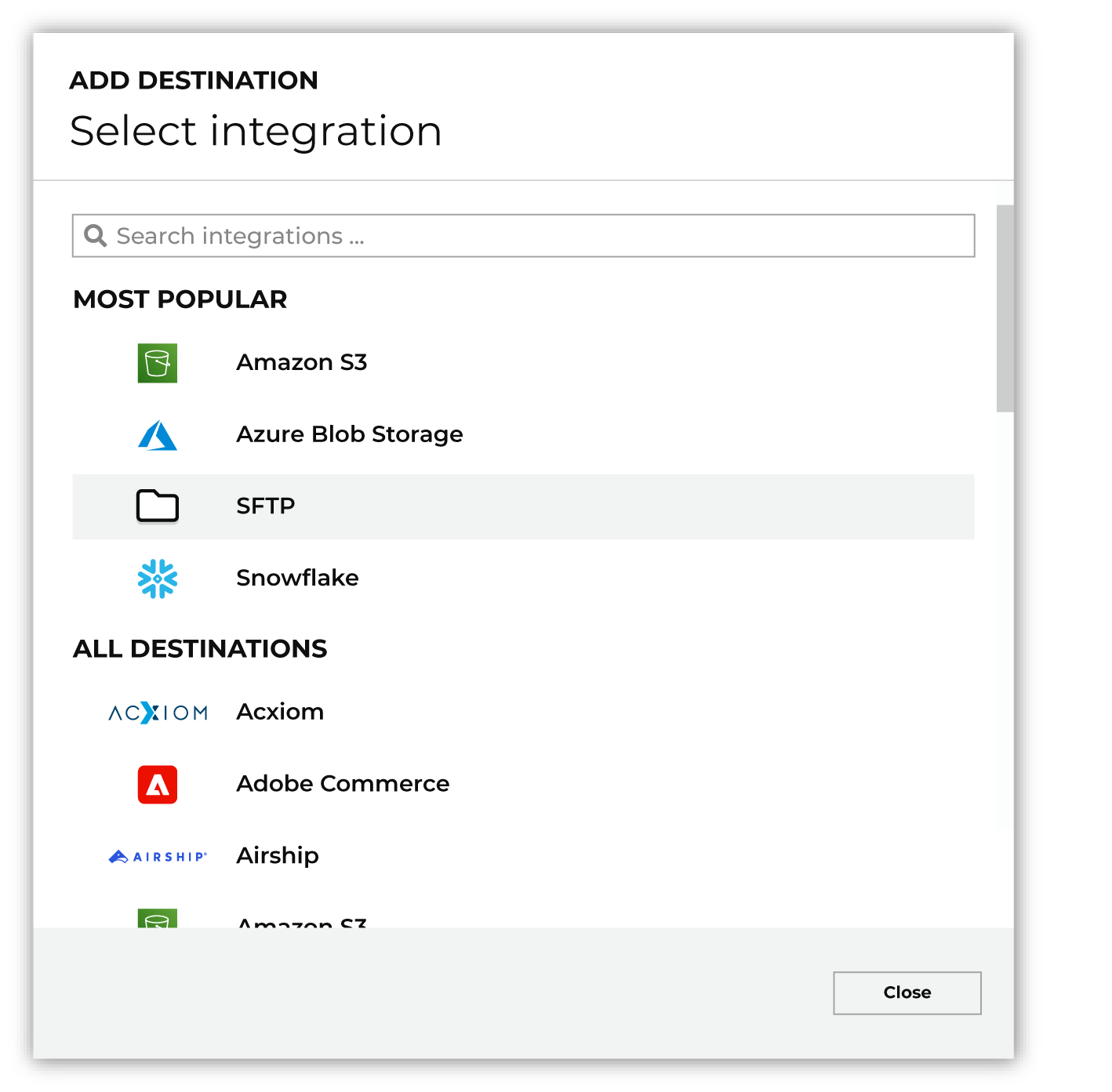Configure destinations for LiveRamp¶
LiveRamp allows clients to combine customer data from various online and offline sources, centering around the use of web cookies that allow websites to remember visitors.
You can associate records in Amperity to an audience in LiveRamp by sending a combination of identifier data and query data. LiveRamp uses:
Identifier data to match records to other identifiers in the LiveRamp Identity Graph.
Segment data to group records into segments based on certain attributes for downstream targeting, measurement, and personalization.
LiveRamp requires an audience ID. This may be a client customer ID from another application, it may be the LiveRamp audience ID itself (from LiveRamp data that was imported to Amperity), or it may be the Amperity ID.
Configure Amperity to send CSV files to LiveRamp.
Get details¶
Review the following details before configuring credentials for LiveRamp and before configuring Amperity to send CSV files to LiveRamp.

|
Credential settings Credentials for LiveRamp require a “username” and “passphrase”. Set the host name to files.liveramp.com, sftp-au.liverampapac.com, or sftp.liveramp.com. |

|
Required configuration settings File format
Header
Remote folder
Note All other Amperity file format settings for LiveRamp are optional. |

|
LiveRamp file preferences Sending data to LiveRamp should follow recommendations for uploading data . Review LiveRamp file limitations . LiveRamp supports the following file formats :
Important Be sure to enable the Include header row in output files option for the Amperity destination. LiveRamp prefers GPG encryption and GZip compression. |
Configure credentials¶
Configure credentials for LiveRamp before adding a destination.
An individual with access to LiveRamp should use SnapPass to securely share “username”, “hostname”, and “passphrase” details with the individual who configures Amperity.
To configure credentials for LiveRamp

|
From the Settings page, select the Credentials tab, and then click the Add credential button. |

|
In the Credentials settings dialog box, do the following: From the Plugin dropdown, select LiveRamp. Assign the credential a name and description that ensures other users of Amperity can recognize when to use this destination. |

|
The settings that are available for a credential vary by credential type. For the “liveramp” credential type, configure settings, and then click Save. Hostname
Passphrase
Username
|
Add destination¶
Use a sandbox to configure a destination for LiveRamp. Before promoting your changes, send a test audience, and then verify the results in LiveRamp. After verifying the end-to-end workflow, push the destination from the sandbox to production.
To add a destination for LiveRamp

|
Open the Destinations page, select the New destinations button, and then select Orchestration. 
To configure a destination for LiveRamp, do one of the following:
|

|
Select the credential for LiveRamp from the Credential dropdown, and then click Continue. Tip If there are any issues with destination connectivity, an error message will display in the destination setup dialog. If the destination saves successfully, the connection is ready for use. |

|
In the “Destination settings” dialog box, assign the destination a name and description that ensures other users of Amperity can recognize when to use this destination. Configure business user access By default a destination is available to all users who have permission to view personally identifiable information (PII). Enable the Admin only checkbox to restrict access to only users assigned to the Datagrid Operator and Datagrid Administrator policies. Enable the PII setting checkbox to allow limited access to PII for this destination. Use the Restrict PII access policy option to prevent users from viewing data marked as PII anywhere in Amperity and from sending data to downstream workflows. |

|
Configure the following settings, and then click “Save”. Compression
Escape character
File format
Filename template
Header
Line ending
PGP public key
Quote mode
Remote folder
Success file
Use Zip64?
|

|
After configuring this destination users may use:
|

|
Test the connection with LiveRamp by using an audience with a very small membership. For example: 10 or 100 members or the minimum audience size recommended by LiveRamp. Send the test audience to LiveRamp and verify the audience is correct in LiveRamp. Make adjustments if necessary. Only send full audiences after validation is complete. |